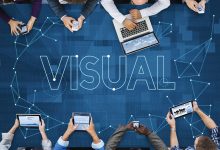Big data is revolutionizing the way businesses gather and analyze data. Ultimately, it is optimizing the speed and efficiency of the decision making process. While advanced analysis tools bolster the information gathering and analysis of data, purely numerical models can be difficult for anyone who isn’t an IT guru to read.
Visualization tools take the data gathered by your company and make it palatable. Analyses can be difficult to comprehend, but once it is put into context through the use of visual aids like length, position, size and color, the outputs no longer look like hieroglyphs. The proper big data visualization tool can create visuals based on human preference and perception. That’s right, it even analyzes data to decide how to best present data to you.
By putting statistics into pictorial format, it allows those you to make tough business and marketing decisions by helping you see analytics like IT specialists. Visually appealing data enables you to identify trends and have a better grasp of previously unnoticed causes and effects. Infographics, geographic maps, and enhanced pie and bar graphs and time-series charts can bring to life to show data in real-time.
Data Visualization Is Crucial to Understanding Data
As much as data visualization may seem like a new concept, it has been in practice for a couple of centuries. Maps are the first form of visual data; they have been used to chart location since ancient times, and graphs have been used since the 1600’s.
Computers have monumentally changed how data is gathered and converted to visuals. Now you are able to analyze and present massive amounts of vital information very quickly. Visualization tools are normally easier to learn and operate than traditional data analysis software. They could possibly completely eliminate the need for IT support.

Even though visual analysis tools are aimed at making data more readable for marketers and decision makers, they are also very useful for data engineers. They can use the software for predictive analytics and machine learning algorithms. When statistics are fit into visually recognizable models based on size, color and length, they are much easier to interpret than numerical outputs.
How Visualization Tools Are Used
Big data visualization tools have a wide array of uses, all of which are aimed at making data more understandable. Their appeal lies in their user friendliness which allows marketers, executives and data engineers to comprehend the data and make informed decisions in relation to it. There is also great science behind the use of visualized data as it has been proven that humans are more capable of retaining information through the use of visual information than through text and numbers.
Business Intelligence Reporting
One of its main uses is as a business intelligence reporting tool. The software is able to generate automatic dashboards that track the performance of your company across key markers. Some of this software is capable of visually interpreting the results in real-time, which makes it easier to implement changes on the fly.

Marketing
The advantage that big data analytics can give marketers is almost unfair. The issue is making the information usable for your marketing team, and that’s where visualization tools come into play. Visualization tools allow you to keep up with the performance of marketing projects by monitoring email campaigns. It is capable of tracking metrics such as your click through and conversion rates. As a result, your marketing team will be able to handle more of the load as it relates to marketing. Results have shown that 48% of marketers and executives never or rarely need the aid of an information technology support team when using big data visualization tools.
Benefits
The chances are that your company is already utilizing some form of big data analysis, but technology is constantly revolutionizing how data can be utilized. Analytics visualization “declassifies” statistics so that decision makers can interpret what the numbers are actually saying and how to best proceed. Visual data recovery makes finding information that could be under layers of data much easier and faster. Business intelligence persons who use this software are more likely to find the information that they need in a timely fashion than those who don’t.
Visualization software allows your executives and marketers to identify rapidly progressing trends and act on them faster than ever before. Not only can this data show you what customer behavior is at given times and in given conditions, but it can also predict trends. This allows your company to anticipate what your customers want and launch your products accordingly.
Another one of the most valuable perks of visualization tools is that users can interact with the data and not just view it. Now, you can pull together multiple sets of data and quickly pinpoint relationships between different data points. This effectively helps you to better recognize what factors most determine your business’ performance, giving you an increased ability to create the ideal environment for your business to excel.
The Big Picture
To compete in today’s business climate, it is necessary to be able to quickly gather and analyze data while making it palatable for those who most need the data. Humans are much better at grasping visual concepts than numeric/text output. Data visualization tools allow marketers to monitor projects and determine how best to modify campaigns with greater ease. These tools can be used to show how your business is performing in relation to a myriad of factors, from geography to education. If you aren’t using analysis visualization tools, then you’re not getting the full picture.
